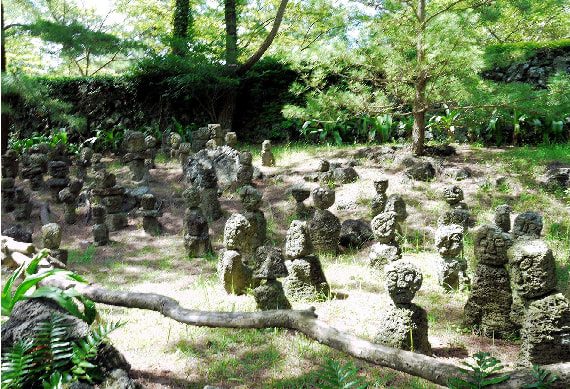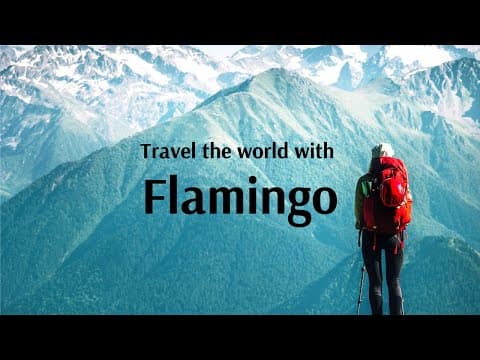- Home
- International Tour Packages
- South Korea
- Dream Korea
Dream Korea

Cities : Seoul (2N),Busan (1N),Jeju City (2N),Seoul (1N)
Sightseeing
- Nami Island
- Dongdaemun Market
- Changdeokgung Palace
- Gyeongbokgung Palace with Royal Guard Changing Ceremony
- Haeundae Beach
- Sea Walk by glass bridge
- Hyeopjae Beach
- Hallim Park
- Cheonjeyeon Falls
- O’Sulloc Green Tea Field
- Suweolbong Trekking
- Sanbang Mountain
- Horse museum
- Seongsan Ilchulbong Peak
- Seongeup Folk Village
- Gwangchigi Beach
- Haenyeo Museum
- Manjanggul Cave
Meals
- 6 Breakfast
Day wise travel itinerary
- Day 1 :Arrive at Incheon Airport & Transfer to Seoul City, Check in into Hotel. Evening Enjoy Nanta Show
After complete your immigration, you will meet local representative. You will depart for Seoul. After complete your lunch, you will travel to hotel. Check In time 1500 Hours. Relax at hotel. Evening enjoy Nanta Show. A show blending acrobatics, martial arts, music and culinary skills – that’s got to be a unique combination. Dinner in Restaurant. Overnight In Seoul.
- Day 2 :Enjoy Nami Island Tour, Petite French & Visit War Memorial Korea
Breakfast at Hotel, you will depart for Nami Island. Nami island is a beautiful island that is among the most popular attractions in Korea for good reason. Featuring beautiful tree lanes, woodlands, riverside walks, and many more. Nami Island offers picture perfect scenery all year around. After lunch, you will visit War Memorial Korea. The War Memorial Korea is a museum located in Yongsandong. It opened in 1994 on the former site of the army headquarters to exhibit and memorialize the military history of Korea. Petite French is a French culture village set in the Korean country side. Designed with the theme concept, flowers, stars, and the little prince. The village offers experience programs, training facilities, and accommodations. Overnight In Seoul.
- Breakfast
- Day 3 :Transfer for KTX Bullet Train - Busan City Tour
Breakfast at Hotel, Depart for Train Station. KTX A Bullet Train. Proceed for Busan City Tour Sea Walk by glass bridge, Dalmaji hill (the point of photo ) for a stunning coastline, APEC House - Haeundae Beach, Cinema center, Centum City (the biggest department store in Korea). Overnight in Busan.
- Breakfast
- Day 4 :Enjoy Jeju Island East Course Tour
Breakfast at Hotel, you will depart for Jeju Island East Course Tour. Here today you will visit Seongsan Ilchulbong. It is an archetypal tuff cone formed by hydro volcanic Seongeup Folk Village, Eco Land after lunch, you will visit Dongmun Traditional Market. Dinner in Restaurant. Overnight in Jeju Island.
- Breakfast
- Day 5 :Enjoy Jeju Island – West Course Tour
Breakfast at Hotel, Visit Hyeopjae Beach (One of “must go to beaches’ in Jeju ), Hanlim Park(Jejulargestthemeparkwithvarious botanic gardens), O’Sulloc Green Tea Field (the views of the nearby green tea fileds and the surrounding landscape as well as Korean traditional tea culture), Suwelbong Trekking (Designated as Global GEO Park by UNESCO), Sanbang Mountain (enjoy picturesque ocean view , designated as Gl bal Geopark), Chenjeyeon Waterfall (the pond of God). Overnight in Jeju Island.
- Breakfast
- Day 6 :Check out from Jeju Island and Seoul City tour
Breakfast at Hotel, Morning Palace and enjoy Royal Guard Changing Ceremony, Pass by Insadong antique shopping street, Lunch at local restaurant, Shopping center of Korean Ginseng or Amethyst, Traditional Market, Namdaemun - Changdeok Palace. Overnight in Seoul.
- Breakfast
- Day 7 :Check Out From Hotel & Depart for Airport
Breakfast at Hotel, you will check out from Seoul Hotel & depart for Airport with Happy Memories.
- Breakfast
Sightseeing

Hyeopjae Beach

Hallim Park
Timings

Cheonjeyeon Falls

O’Sulloc Green Tea Field
The osulok tea museum which is in contact with the Jeju Oseulok-ro Seokwang tea field is the first tea museum in Korea opened in September 2001 to introduce and widely spread the culture of tea and Korean traditional tea. It is a cultural space that harmonizes East and West, tradition and modern. It has become a tea museum, a nature-friendly resting space, and a tea museum in the 21st century in 2013.

Suweolbong Trekking

Sanbang Mountain

Horse museum

Seongsan Ilchulbong Peak

Seongeup Folk Village
Seongeup Village has been the center of Jeongjeong-hyeon for over 500 years since the eupchi (place of the government office where the village chieftain managed affairs) established in Goseong-ri, Seongsan-eup in the 10th year of King Taejong's reign (1410) of the Joseon Dynasty was moved here in the 5th year of King Sejong's reign (1423) of the Joseon Dynasty. It is a historic village. According to records, Jeongjeong-hyeon originally built Jeonguiseong Fortress in Goseong-ri, Seongsan-eup in the 16th year of King Taejong's reign (1416) at the suggestion of Oh-sik, the master of the reign of King Taejong. Since invasions from the Joseon Dynasty were frequent, it is said that at the suggestion of Jeon Gwan Anmu, the county office was moved to Jinsari (currently Seongeup-ri, Pyoseon-myeon) in the 5th year of King Sejong's reign (1423). Accordingly, Jeongguiseong Fortress, also known as Jinsaseong, was completed on the 13th day of the first month of the 5th year of King Sejong, five days after construction began, with a total circumference of 2,986 cheok and a height of 13 cheok. The fortress had three gates to the east, west, and south, and two wells within the fortress. There was this. According to Pastor Lee Hyeong-sang's "Tamna Tour" in the 28th year of King Sukjong's reign (1702), Jeongjeong-hyeon was quite prosperous at the time, with 1,436 private houses, 140 fields, 664 Seongsubi troops, 1,178 horses, and 228 black cattle. It is certain that it was a town castle. After 1423, Seong-eup, which prospered as the town of Jeongjeong-hyeon for about five centuries, was downgraded to the seat of Pyoseon-myeon with the implementation of the Jeju Island system on May 1, 1915. (The current Pyoseon-myeon was renamed Dongjung-myeon in 1935). Entering the 1980s, Seongeup Village's historical importance was highlighted and it reached a new turning point in terms of cultural properties. As a result, it was designated as Jeju Island's designated folk material No. 5, and in June 1984, a total of 1,425 lots (3,191,711?) were promoted to Nationally Designated Cultural Heritage as Important Folk Material No. 188, and in September 1987, the protection area was 935 lots (790,747?). It has been reduced and adjusted to this day.

Gwangchigi Beach

Haenyeo Museum

Manjanggul Cave
Gallery
- Seongsan Ilchulbong Peak

- Map

- DMZ TOUR

- CHANGDEOKGUNG

- Royal Guard Changing Ceremony

- Gyeongbokgung Palace

- HAEUNDAE BEACH

- Hallim Park

- Cheonjeyeon Waterfall

- O’Sulloc Green Tea Field

- Sanbang Mountain

- Horse museum

- Seongsan Ilchulbong Peak

- Map


